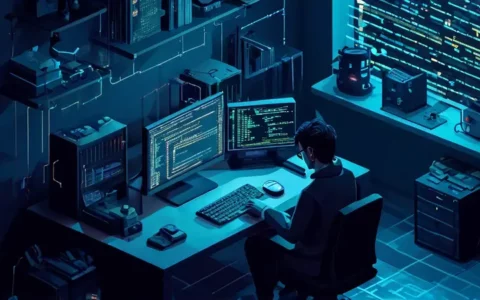
CAN SMALL FIRES LEAD TO PROGRAMMING?
Yes, small fires can lead to programming in the sense that challenges or "fires" (problems that need immediate attention) can inspire the development of software solutions. For instance, a minor issue within a company's workflow could prompt the creation of a new application to streamline processes, illustrating the connectivity between problem-solving and software development. By addressing specific complications or inefficiencies, programmers are often inspired to design innovative software.
I. INTRODUCTION TO PROBLEM-SOLVING THROUGH CODING
In the realm of software development, a "small fire" often refers to a minor, yet urgent, issue or bug that requires immediate attention. Rather than being a setback, these fires serve as catalysts for innovation and improvement within programming. They present an opportunity to troubleshoot and develop new codes or algorithms, enhancing the skill set of a programmer and potentially leading to significant advancements in the software being developed.
II. UNDERSTANDING PROGRAMMING THROUGH CHALLENGES
Programming is inherently about solving problems, and dealing with small fires is a practical way to understand the intricacies of coding. As developers navigate through these challenges, they develop a proactive mindset, seeking long-term solutions rather than quick fixes. This approach deepens their understanding of the programming languages and frameworks they use.
III. SMALL FIRES AS OPPORTUNITIES FOR GROWTH
Dealing with small fires effectively can lead to personal and professional growth for programmers. These issues require developers to think critically and creatively, often under pressure. This hones their ability to write more robust, efficient, and scalable code, elevating their competency as software engineers.
IV. PRACTICAL EXAMPLES OF SMALL FIRE RESOLUTIONS
The real-world applications of resolving small fires in programming are numerous. Programmers may encounter a glitch in a mobile app that crashes under specific conditions, or a website that loads incorrectly on certain browsers. By identifying and correcting these issues, programmers write patches or updates, improving the overall product and gaining valuable hands-on experience.
V. THE ROLE OF COLLABORATION IN TACKLING FIRES
When addressing small fires, collaboration is key. Developers often work as part of a team to share knowledge, brainstorm solutions, and support one another through challenges. This collaborative environment not only expedites the problem-solving process but also fosters a culture of continuous learning and knowledge sharing among peers.
VI. EMERGING TECHNOLOGIES IN PROBLEM-SOLVING
In the pursuit of resolving small fires, programmers have access to an array of emerging technologies and tools. Machine learning algorithms, for example, can help predict potential issues before they become fires, while version control systems ensure that changes can be rolled back if a new code introduces a bug.
VII. LEARNING FROM SMALL FIRES FOR FUTURE PROJECTS
The lessons learned from small fires are invaluable for future projects. Programmers develop best practices for code testing, writing documentation, and for the iterative process of software development. They gain insights into how users interact with software, which can inform the design and functionality of future programs.
VIII. INTEGRATING SMALL FIRE MANAGEMENT INTO DEVELOPMENT CYCLES
Proactive small fire management can be integrated into the software development cycle through practices like Agile and DevOps. These methodologies emphasize continuous integration, continuous delivery, and constant feedback, allowing developers to address problems swiftly and efficiently, often before they impact users.
IX. BALANCING FIRE-FIGHTING WITH LONG-TERM DEVELOPMENT
While small fires require immediate attention, it is important to balance this with long-term development goals. Developers must prioritize tasks to ensure that immediate issues do not derail the overall project timeline, maintaining focus on both the present and future needs of the software.
X. CONCLUSION: THE PROGRESSIVE IMPACT OF ADDRESSING SMALL FIRES
In conclusion, small fires in programming are more than just obstacles; they are opportunities for developers to refine their skills, collaborate, and innovate. By embracing these challenges, programmers contribute to a dynamic field that constantly evolves through problem-solving and continuous improvement.
相关问答FAQs:
小火是一个基于Scratch编程语言的在线编程平台。它的目标是帮助孩子们学习计算机编程,并通过创造性的方式培养他们的逻辑思维、问题解决和创造力。小火支持图形化编程,孩子们只需拖动和连接不同的代码块,就能够创建自己的程序和游戏。
1. 小火是如何帮助孩子们学习编程的?
小火通过图形化编程的方式帮助孩子们学习编程。它提供了一系列的代码块,孩子们只需将这些代码块拖动到工作区并连接起来,就可以编写自己的程序。这种直观的方式让编程变得简单易懂,降低了学习编程的门槛。孩子们可以通过探索、试验和失败来学习编程的概念和技巧,培养他们的逻辑思维和问题解决能力。
2. 小火适合哪个年龄段的孩子学习?
小火适合3岁以上的孩子学习。它的界面简单友好,操作容易上手,所以即使是小小年纪的孩子也能够轻松地使用它来学习编程。同时,小火为不同年龄段的孩子提供了不同的编程课程和项目,以满足他们的不同学习需求。对于年龄较大的孩子,小火还提供了更加高级的编程功能,让他们能够挑战更复杂的编程任务。
3. 孩子通过小火学习编程有什么好处?
通过小火学习编程,孩子们可以获得许多好处。首先,学习编程可以培养孩子的逻辑思维和问题解决能力。通过编程,他们需要分析问题、设计解决方案,并将其转化为计算机可以理解的代码。这个过程让他们锻炼了思维的清晰性和逻辑的严谨性。其次,编程可以培养孩子的创造力。他们可以通过编写程序创造出属于自己的作品,例如游戏和动画,这种创造的过程能够激发他们的想象力和创造力。此外,学习编程还可以提高孩子的团队合作和沟通能力。在小火平台上,孩子们可以与其他孩子一起合作编程项目,互相交流和学习,培养团队合作和沟通的能力。
文章标题:小火什么编程,发布者:不及物动词,转载请注明出处:https://worktile.com/kb/p/1769719

 微信扫一扫
微信扫一扫  支付宝扫一扫
支付宝扫一扫 




